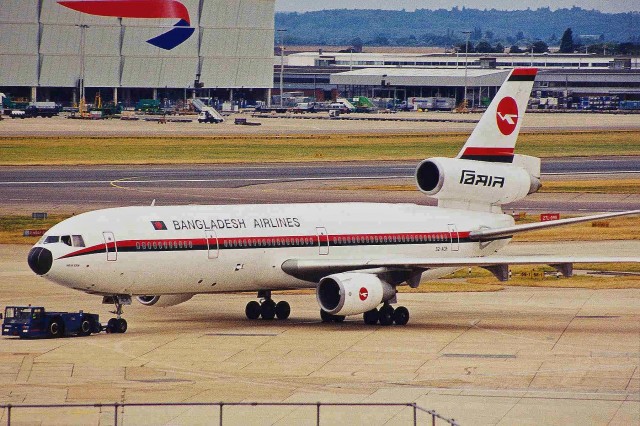
S2-ACR, the last DC-10 in any sort of passenger service – Photo: Ken Fielding
Starting tomorrow, the last Douglas DC-10 will start its farewell tour as the last passenger DC-10. Biman Bangladesh Airlines will fly to Birmingham, UK, by way of Kuwait and then offer scenic tours before it is finally ferried to a final “resting” location in the US. Our own Bernie Leighton will be covering these events from Bangladesh and beyond, but before we tell the last chapter of this majestic aircraft’s life, we wanted to start at the beginning with this historical look at the DC-10.
The birth of the wide-body airliner as we know it today can be traced back to one event in the early 1960’s: The United States Air Force’s request for proposals for the CX-HLS, the program that would ultimately become the C-5 Galaxy. Lockheed won the CX-HLS competition, and as legend would have it, Boeing would strike gold when they converted their design into what we know today as the 747. However, that is not quite 100% true, and Boeing was not the only company to transfer design philosophies from the CX-HLS to the commercial market.
Upon losing the USAF contract, the powers that be at Douglas aircraft immediately started altering their ideas to fit the commercial market, and a race was starting to see who would bring the first wide-body aircraft to market. Like Boeing, Douglas also studied the possibility of a double deck design, capable of seating upwards of 500 passengers, and also like the Boeing airliner concept, Douglas moved from a high, shoulder-mounted wing to a low-wing design.
Douglas studied several different designs, including the D-950 and D-952 concepts, which would have carried 525 and 454 passengers, respectively. However, as further studies at the time decided, there was really no market for a large number of large-sized aircraft, and after Douglas shopped around their proposal for a large, four-engine aircraft to various airlines, including Pan Am (who at the time had just signed an order with Boeing for 25 747s), Douglas management wisely decided to take a step back and consider a detailed look at what the market predicted.
Around this same time, Douglas Aircraft merged with McDonnell Aircraft to form the McDonnell Douglas Company, and the new management team decided to make the DC-10 airliner program a priority. The project team aired for criteria spelled out by American Airlines; a twin-engine airliner that could carry at least 250 passengers and 5,000 lbs of cargo 1,850 miles, cruise at Mach 0.80, and could meet this criteria from the short runways at New York’s LaGuardia Airport. After deciding to tackle this request, Douglas engineers, on their own merit, decided to pitch the idea of a three-engine aircraft, arguing that it would be no more costly than a twin, and would offer better performance in hot weather.
Douglas convinced American of the three-engine layout after seeking the advice of other airlines, and the revelation that Lockheed was developing a similar aircraft: the Lockheed L1011. As a result, in July 1967, American issued a refined set of requirements: A tri-jet capable of transcontinental flight, with full payload and a trip time within minutes of the 747, comparable economics to the 747 between New York and San Francisco, and a Mach 0.85 cruise speed at 35,000 feet.
With this revised criteria from an airline, the McDonnell Douglas board gave its permission to launch the DC-10 in November, 1967. This was officially realized in February 1968, when American Airlines placed an order for 25 aircraft, with 25 options. Two months later, the program was launched when United Airlines placed an order for 30 aircraft, and 30 options. With orders in the books, the process of fine-tuning the design and moving towards production could begin.
Douglas chose the GE CF-6 high bypass turbofan, since Pratt & Whitney was heavily involved in producing engines for the war effort in Vietnam, and the JT9D was the sole engine choice at the time on the 747. Rolls Royce was in an awkward position, since they had a sole source contract with Lockheed for the powerplant on the L1011. Douglas engineers studied various options for locating the third engine. Looking at everything from an S-duct in the tail (Lockheed chose this for the L1011), to having the engine buried in the tail cone with a bifurcated duct that wrapped around the base of the vertical fin. The design that the engineers finally chose was to have a straight pass through duct mounted on top of the tail cone, creating a so-called “banjo”.
Wind tunnel tests proved that this arrangement would yield better performance results, and would also ease maintenance and spares issues. By placing the engine on top of the tail cone, and having all engine attach fittings in the top of the banjo, one engine could be used in any of the three engine locations, with only 45 minutes worth of work needed to reconfigure an engine off a wing for mounting in the tail.
Douglas had originally planned on having three models of the DC-10; the DC-10-10, 10-20, and the 10-30. The base model (the 10-10) was a transcontinental aircraft, and was not optimized for intercontinental routes. The 10-20 was to be the first of the intercontinental DC-10s, powered by the Pratt & Whitney JT9D. Lastly, the DC-10-30 was to be the same as the -20, however it was to be powered by up-rated versions of the CF-6. The main distinguishing features of the -20 and the -30 were the addition of a third main landing gear leg, mounted directly on the centerline of the aircraft.
Northwest Orient was the first airline to order the intercontinental model in October 1968, and they chose the JT9D engines for fleet commonality with their 747s already on order. Only one other carrier would order the -20, and that was Japan Airlines. Now, I am sure that many aviation fans here are thinking that no DC-10-20 ever saw service, and you would be technically correct. Prior to delivery of the first -20 to Northwest, according to popular legend, Northwest and Japan Airlines both approached Douglas saying that they did not want their aircraft to seem inferior to the -30 model, and wanted their aircraft to appear to be the best and latest model of the DC-10. Douglas gave in and designated the DC-10-20 as the DC-10-40.
The first DC-10, a -10 model, made the type’s first flight on August 29th, 1970 from Long Beach, California, just one month after the official rollout on July 23rd. A year later, after a flight test program that spanned 1,500 flight hours over 929 flights, using 5 aircraft, the DC-10 received its FAA Type Certificate on July 29th, 1971. That same day, the first two aircraft were officially delivered to two inaugural customers: American Airlines and United Airlines. The first passenger flight of the type occurred just a week after the first delivery, when American flew a round trip flight from Los Angeles to Chicago on August 5th, using N103AA, the 5th DC-10 built. United followed suit on August 16th, with a round trip from San Francisco to Los Angeles using N1802U. Deliveries quickly followed to other airlines, and soon the DC-10 could be seen on routes all over the United States and, for that matter, the world. Entry into service was smooth; however, the aircraft soon gained a reputation that no one wants for any aircraft.
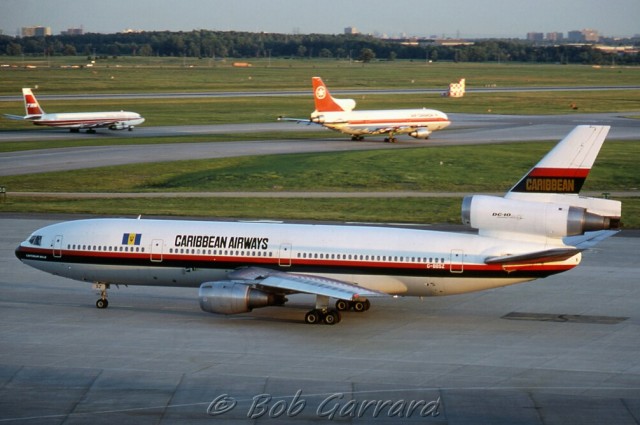
A Caribbean Airways DC-10 with a Lockheed L1011 and Boeing 707 in the background – Photo: Bob Garrard
On June 12th, 1972, the DC-10 experienced its first major incident, and a serious design flaw was uncovered. N103AA, the same aircraft that just less than a year before completed the type’s first passenger flight, was operating American Airlines Flight 96 between Detroit and Buffalo. Just after departure, as the aircraft was passing through 11,750 ft, the aft cargo door explosively departed the aircraft. The resulting decompression caused the floor over the cargo compartment to cave in, damaging the flight control cables that passed through the area. Parts of the door also impacted the horizontal stabilizer of the aircraft.
Upon a safe landing back in Detroit, investigators found that the door on this particular aircraft had been difficult to latch prior to departure. The ground crew member stated that he had to use more force than normal to latch the door. He also noted that the pressure relief vent door, a smaller door to relieve any aircraft pressurization prior to normal opening of the door, was not fully seated closed. Upon investigation of the door, which was recovered intact from Windsor, Ontario, it was discovered that the door latch never engaged, and moved just enough to cause the ’œDoor Open’ warning light to extinguish in the flight deck – the door appeared to be closed. Following this incident, McDonnell Douglas immediately issued a service bulletin to modify the doors, but airlines were not mandated to make the repair. The FAA also failed to issue an Airworthiness Directive, which would have made the Douglas modifications required before the airplane could fly again.
The type soldiered on for two more years before the cargo door issue came back to haunt McDonnell Douglas, this time with disastrous results. On March 3rd, 1974, Turkish Airlines Flight 981, operated by TC-JAV, departed Paris Orly Airport bound for London with a full load of 346 passengers and crew. As the aircraft was climbing out of Paris, muffled, panic-filled calls came over the ATC frequency. Turkish Flight 981 had been lost with no survivors over the Ermenonville Forest outside of Paris. Investigators soon discovered that the cause of the crash was the rear cargo door opening in flight. Pieces of wreckage were found that included the intact door, still attached to parts of the aircraft skin and cabin floor structure. The investigation soon revealed that a similar scenario to the American Airlines incident nearly two years prior had occurred, and this time, the FAA acted. McDonnell Douglas immediately redesigned the door, and added small windows that would allow the ground crew to visually verify that the latch pins were engaged. The DC-10’s reputation was already tarnished and the aircraft was in the public eye for the wrong reasons.
The next major incident would come on May 25th, when American Airlines Flight 191, operated by N110AA, departed Chicago bound for Los Angeles. Moments after takeoff, the aircraft’s #1 engine separated from the left wing and flipped up over the top of the aircraft. The ensuing crash killed all 271 passengers and crew onboard, and two on the ground. In the investigation into what remains the deadliest single plane crash on US soil, it was discovered that American Airlines was using a method to change engines on the aircraft that was not approved by McDonnell Douglas, and it was soon discovered that two other US carriers, United and Continental, used similar methods.
This method was to remove the engine and support pylon at the same time, instead of removing the engine first, and then the pylon like Douglas called for. In the case of United, they used a series of hoists to accomplish this task. However, American and Continental used a large forklift to support the engine/pylon assembly during the removal process. It was discovered that eight weeks prior to the crash, the #1 engine on N110AA was changed using this method, and that undue stress was placed on the pylon to wing attach fittings during the process. At a critical time in flight, when full thrust of the engine was applied to these fittings, they finally failed, causing the results witnessed.
Upon investigation, it was revealed that many other American and Continental DC-10s had damage to their mounts, while aircraft from United did not. Since this crash was caught on film, and the footage was shown on TV news broadcasts across the nation, many refused to fly on the DC-10, labeling it an unsafe aircraft and a death trap. It was so bad that American, who had labeled all of the DC-10s with ’œDC-10 Luxury Liner’ monikers on the nose, removed the DC-10 markings, and just called them ’œLuxury Liners’.
Throughout the next ten years, there would be many more accidents involving the DC-10, however most of them would be the result of crew error, such as the November 28, 1979 sightseeing flight over Antartica by an Air New Zealand DC-10, ZK-NZP. This crash was the result of controlled flight into terrain when the aircraft flew into the side of Mount Erebus, killing all 257 passengers and crew. The next major technical malfunction would bring the DC-10 into the spotlight again, but this time in a positive light.
On July 19th, 1989, United Airlines Flight 232, operated by N1819U, was en route from Denver to Chicago when the #2 engine, located in the tail, suffered a catastrophic uncontained failure over Iowa farmland. I will not go into too much detail about this crash, since it is one of the best known and documented aviation incidents, but a brief synopsis follows: As a result of engine fragments severing all three hydraulic systems, the pilots lost all control of the aircraft, and it was only through the application of differential thrust that they were able to rudimentaly control the aircraft and attempt a landing in Sioux City Iowa.
It was the efforts of Captain Al Haynes, First Officer William Records, Second Officer Dudley Dvorak, and Captain Dennis Finch, that there were any survivors. When one looks at the footage of the crash, it is hard to believe that anyone could have survived, but 185 of the passengers and crew lived.
After the Sioux City crash, the DC-10 has led a relatively quiet life, serving many airlines and cargo haulers safely for decades. After Northwest Airlines retired their last DC-10 in 2007, the type left mainstream commercial service in North America and Europe. However, the type continued to soldier on in southern Asia with Biman Bangladesh. In the following days, over 42 years after the type’s entry into full passenger service, its days will be nearly over, as Biman retires their last DC-10, the second to last airframe built. The type will live on for many more years, however, just not carrying passengers anymore: it will still make money as a freight hauler, mainly with FedEx.
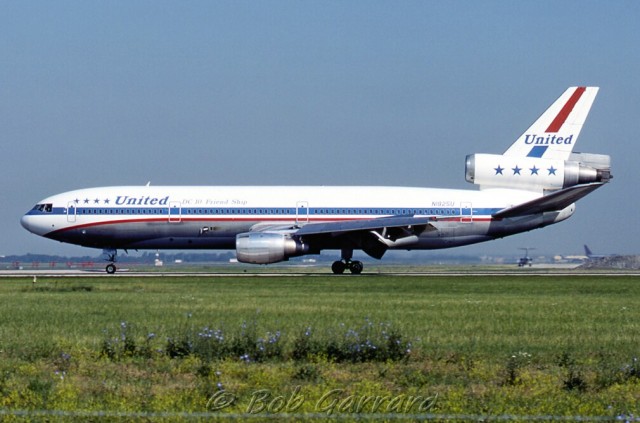
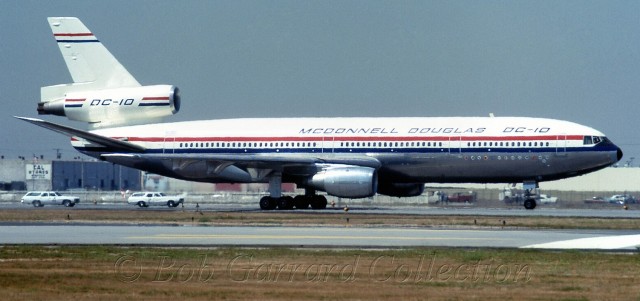
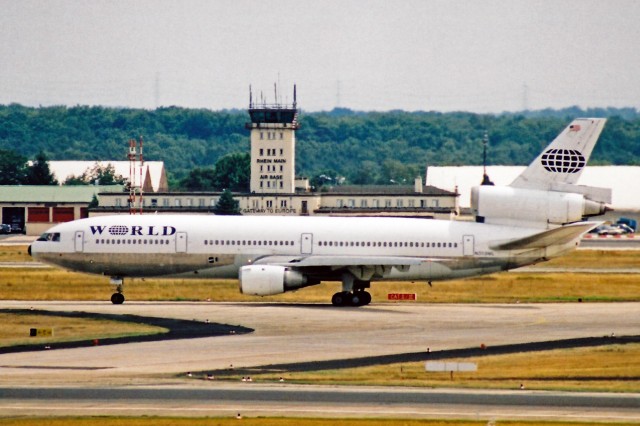
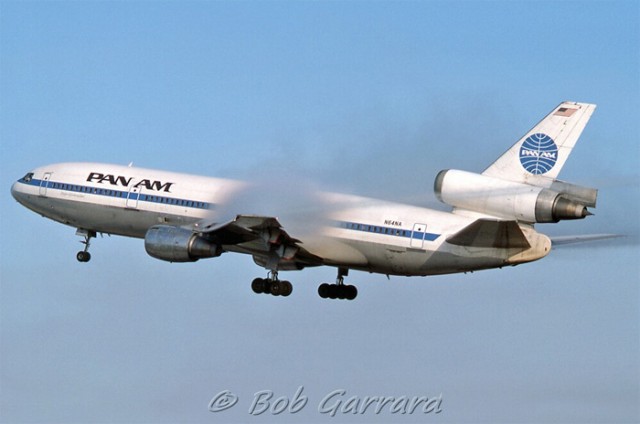
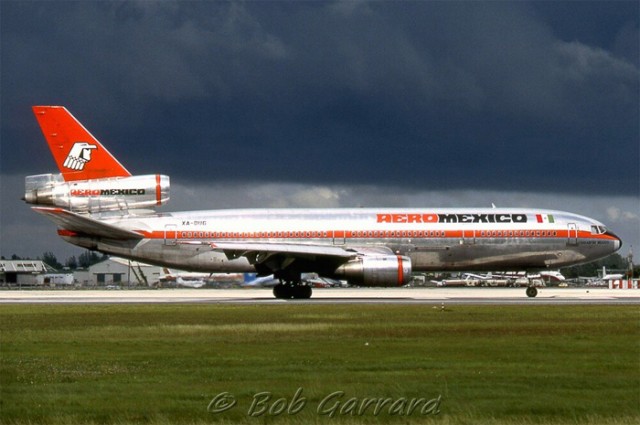
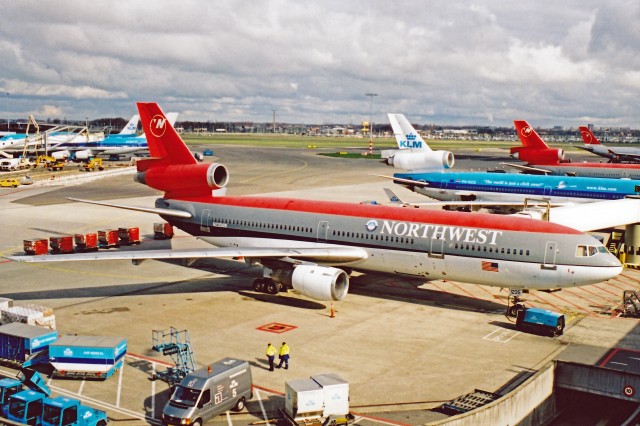
Great Article, beautiful pictures. Interesting to note that FedEx still operates 60 DC-10s of various models. I always considered the tri-jets to have more character than the standard two & four engined planes. The “banjo” was just the coolest looking thing to ever grace a plane.
We used to ride DC-10s when I was a kid, from NYC to Glascow Scotland. And all I Really wanted to know is How Many Hours those flights took! Bcuz I thought it was a much Faster airplane & only took about 10 hrs or so but I can’t Remember bc I was very young in those days. Could somebody Plz tell me How Long it took s DC-10 to travel fron point A to point B compared to the 747. Specifically from NYC to Glascoe plz!!
Hi, Annie. My guess is 7+ hours Eastbound and around 8 hours Westbound.
Despite its rocky beginnings, the DC-10 in my opinion is one of the most iconic aircrafts ever made. It saddens me that another trijet will probably never be built in my lifetime. I like all aircrafts, but trijets like the Boeing 727, Trident, DC-10, and MD-11 have a distinct look to them and they hold a special place in my heart.
Very nice article. I’d be interested to learn more about the MD-11, which appeared very similar to the DC-10; I flew the -11 several times between Atlanta and Portland, Oregon. I seem to recall reading somewhere that it got phased out by the airlines relatively quickly because it lacked the needed fuel efficiency; it did seem to me as though they dissapeared from Delta’s fleet, for example, rather quickly…
The DC-10 and MD11 were my favourite jets when growing up in the 80’s. I remember the Continental DC-10’s that used to fly to Sydney via Auckland would park right near the viewing platform at Sydney airport. In 1996 I flew on an American Airlines DC-10 from HNL to SFO and being Thanksgiving Day there was no rental for the headphones! I flew back on one a couple of weeks later after having my 21st in the USA. Goodbye DC-10 – I’ll miss you!
Great article on a classic jet! I’d like to note the USAF also flies a fleet of 59 KC-10 Extender aircraft, which are the military variant to the DC-10 and provide mid-air refueling, cargo, and passenger service all around the world. Current budget battles have placed the future of the fleet in doubt but we had plans to fly them for many more years. Really safe, reliable jets despite their age and the accelerated flight hours we’ve put on them.
It is true that the DC-10 will soldier on for many more years with military operators in the form of the KDC-10 with the Netherlands and the KC-10 with the USAF, however, recent developments within the US congress show that the 59 KC-10s could be retired as soon as 2015 for bugetary reasons. I did not mention these aircraft due to being military operated, as well as the aircraft operated by Omega Air Tanker and 10 Air Tanker because while civilian owned, they operate on an extremely restricted basis on government contracts.
I grew up loving the L-1011, and the DC-10 being a close second.
DC-10’s ruled Sydney skies in the late 70’s to mid 80’s. I used to love seeing the UTA & Air NZ 10’s gliding over Sydney, and also of course MAS, Thai, Garuda, JAT, Philippine Airlines, JAL, CP Air, Harlequin Air, Continental & AOM & on the odd occasion Lufthansa & Alitalia would bring them in replacing their 747’s.
My family lived not far from the airport when I was a kid, and dad would often drive me to “Mascot Airport” whenever we saw a DC-10 come in. We’d then stay in the viewing deck admiring them.
Unfortunately I never flew the Tristar, but I did experience the UTA DC-10 to Tahiti & Air NZ DC-10 to Rarotonga. Beautiful externally, and internally they had that certain je ne sais quoi.
Goodbye to a very elegant aircraft.
Hoping this DC-10 will come to the Museum of Flight in Seattle!!
I do recall seeing somewhere on A.Net that this DC-10 was indeed coming to Seattle, but there was no specification as to where (I can only assume it would be BFI or PAE, but there’d be no sense in it going to PAE).
When the Biman DC-10 has completed its scenic flights from Birmingham U.K. It is going to be flown just 23 miles to Bruntingthorpe Airfield where it will become a museum attraction.
Thanks for the great retrospective on the DC-10. While commercial PAX service is ending, as another commenter notes, USAF operates many as the KC-10. (We’ll see whether they retire it or not…). As far as I know, most, perhaps all of the 60 or so operated by FedEx were heavily modified with modern glass cockpit and a two-person crew, then renamed the MD-10. I could be in error, but I think FedEx is the only operator of the MD-10 type and *may* now own the type certificate. An unfortunate early history, but proven to be a solid, reliable airplane.
You are right in that most, if not all, of FedEx’s DC-10s were convereted to MD-10 standards. Boeing worked with FedEx to create this STC, and I believe that they did market it to other operators, but with no takers. As far as I know, Boeing is the owner of the MD-10 STC.
My first long haul flight was on a Air NZ DC10. I have been lucky enough to fly on the tristar and the trident all interesting aircraft I have been in cockpit of them all in flight the trident being the most interesting with its paper moving map display. Long may the DC10/MD11 live on with fed ex, USAF and the Dutch air force.
very nice article. DC-10s were really big deal here in Brazil, since they were the first widebodies that Varig bought.
I flew one just once, however, with United in 1999. What strikes me is that its configuration is still used, sometimes, in a lot of cartoons when showing an airplane. The 2-5-2 was really bad, but it still is a classic.
here’s a picture of a Varig DC-10… really miss the old brazilian airline.
http://2.bp.blogspot.com/-rNX7Zzr0kXY/TVf_YoM22CI/AAAAAAAAAdg/p0-YYyppAXA/s1600/MINHARG-dc10.jpg
I worked in Biman Bangladesh for many years and emotionally feel bad for the last DC-10-30 quits the Biman’s fleet which was only the remain-er passenger flight over the world. It definitely, in a crucial period of years helped Biman to sustain in its business spreading wings in the limitless sky.
I bid farewell to DC-10 but will remain not only in the museum over the decades but in my mind forever I long!
Biman’s DC10 (named Nobojug) was my first aircraft to travel to Singapore from Dhaka about 20 years back and still I remember the comfort and reliability of the Workhorse. In those days DC10 was the pride of Bangladesh Airlines which hauled over the world from Dhaka to New York and Tokyo.
I was a flight attendant in the 1970s and 1980s with World Airways, and the DC-10 was our bread-and-butter aircraft. I enjoyed seeing a picture of a World DC-10 in this article. Looking at the picture, I remember at door #2 was an elevator that led down to the galley, which was a claustrophobic-inducing little room where all the beverage carts and ovens for meals were stowed. I used to hate to be stuck working down there! Now all these years later I’m a flight attendant for JetBlue Airways, and the largest aircraft we fly is the Airbus 321, a single-aisle aircraft that seats about 200 passengers – a far cry from our 350-seat DC-10s at World. Thanks for the trip down memory lane.
Sadly the latest on the fate of the final passenger DC-10 is that it’s not going end up either in Seattle or Brunthingthorpe, but is being flown back to Dakhar. Let’s hope its going to be preserved, but rumours are that economics have won the day and it’s going to parted out.
From 1979 to 1993. My job was installing the landing gears on DC-10, KC-10 MD-11. It was and is a beautiful aircraft. sadly McDonnell Douglas is no more! I think the merger with Boeing was a mistake. The U.S. needs 2 commercial aircraft builders. It takes 2 people for nose gear 3,4 to install the center and mains. The last DC-10 was fuselage 446 Nigerian, 447 the 1st MD-11.
Yes I agree Cliff, The Long Beach Plant was awesome, Rich J6M building 80 during the 1980’s
In regards to the sightseeing Air New Zealand flight 901 crash in 1979:
This crash was not caused by ‘crew error’ as incorectly stated in the article.
In respect to the pilots involved, it should be known that the accident was caused by a last minute change to the flight course by the airline unknown to the pilots. The two pilots were following incorrectly given coordinates and crashed into Mt Erebus during a ‘whiteout’ instead of travelling along McMurdo sound as assumed.
Fascinating article. Thanks for taking the time to post it. My own interest in civil aviation in general – and the DC10 in particular – began in the mid-1980’s when, aged nine, a British Caledonian DC10 on final approach to Stanstead scared the life out of me after appearing over a hedge 100ft from the ground with its distinctive high-pitched scream and surreal tail-mounted no 2 engine. I vowed to fly on one, and finally did, on Biman’s own S2-ACR, out of Birmingham, on 23rd February 2014.
Good article – except for one point. The crash of the sightseeing flight over Antartica by an Air New Zealand DC-10 was not due to crew error. The reason was, primarily, due to the wrong waypoint co-ordinates being entered into the flight computer. Read the Royal Commission findings from Justice Mahon that outlines the 10 key reasons that led to this accident occurring. Had anyone of these factor not occurred, then the crash would not have happened. (Nothing with this crash had anything to do with the aircraft being a DC10).
It would be appreciated if the article was corrected in respect of the crew.
I am grateful for your well documented article, and thanks to your efforts am now somewhat the wiser about this craft. I thought you may be interested to know that after the last nimrod and VC10 leave service the MOD will borrow 6 tankers from the us until the British replacements are certified and crew training using DC10 or is that KC10?
Ireally loved the history and your depth of detail. Thank you
I always had the feeling that the front of the DC-10 looked a little bit like the head of a great white shark…a little bit scary, but exciting at the same time. Most of the ones I flew were Continental trans-pacific or atlantic..often the heavy 10-30. I thought they were tremendous aircraft. Continental’s pub service was special, an awesome in-flight bar! Once with my young daughter were invited to visit the cockpit when we were refueling on the ground in Guam. My hat is off to the fine crews that serviced these fine airliners. They truly made flying a joy!
I had the unfortunate experience of flying a DC-10 out of Detroit, headed westbound (sorry, forgot my destination) about a year or two AFTER the eventful near-crash of the LA-to-Buffalo-via DETROIT (cargo door blew out/coffin landed outside Windsor, ONT, CAN, etc)… and probably less than a year before the fatal Air France DC-10 crash, again, with the as-yet un-repaired cargo door…
MY experience involved a beautiful, seemingly “normal” takeoff from Detroit Metropolitan Airport, and probably at about 4,000 ft altitude, a scared-but-friendly-sounding Captain, said that our landing gear had registered as locked in the up-position, and that we were to assume “the crash position” while the crew figured out what to do (what an unusually forthcoming pilot!)
apparently, one of the flight deck crew crawled down into the *observation space* below the cockpit, and confirmed that the wheels was up-and-locked, and that it was just an “idiot bulb” failure on the dash, so to speak…
of course, since the problem was corrected, and our flight continued on westbound, this incident was logged as an “incident” at best, but soured me on the *DC-10* experience.
Oddly, fatefully enough, I had a friend die on Northwest 255, an MD-80, Outbound from Detroit. Tell me all the statistics you want.
Sorry, my typo, prev., I meant to type: “The landing gear had NOT registered as locked in the up-pposition!
The American crash was 1979, not 1974.
The ANZ DC that crashed 28 November 1979 in Antarctica has not been determined a result of pilot error. Coordinates entered into the flight plan by ANZ put flight TE901 on a direct path with the volcano into which it crashed in whiteout conditions. Contact Air New Zealand for details but blame does not rest with the pilots.
i like this airplane
splendid
Still the most comfortable ride of any aircraft I’ve ever flown, esp. in the back.
Well it’s 5 years later and they still serve. I’ve read that they could still be flying for the air force till 2045.
“The next major incident would come on May 25th, when American Airlines Flight 191, operated by N110AA,…”
I would suggest a revision to the text to clarify that the Flight 191 tragedy occurred on May 25, 1979, not in 1974 as implied by the date of the previously documented incident. I know this to be true because my family lost a close friend in the Flight 191 crash.
An intriguing discussion is worth comment. I do believe that you should publish more on this subject, it might not be a taboo subject but usually folks don’t discuss such topics. To the next! Kind regards!!|
Comment*cuáles fueron los cinco primeros prototipos del Dc-10? Que número de serie tenàan..?
Saw one DC 10 operated by JAL at Brisbane airport while waiting my flight to Dubai, nice and gentle looking externally but several crashes along it’s life places it at end of my favorite aircrafts for international flights.